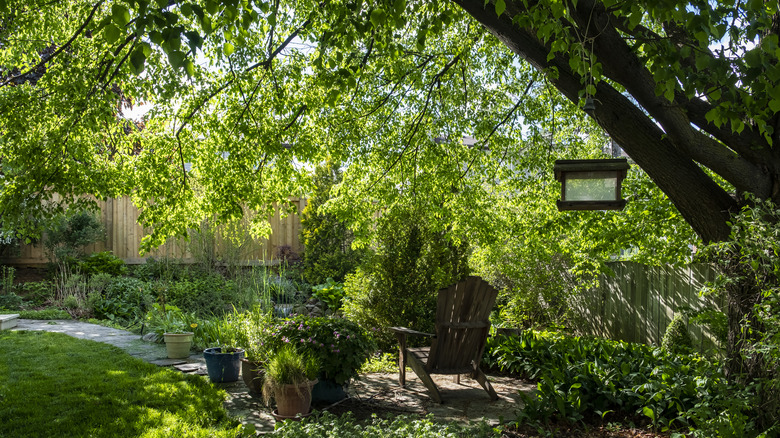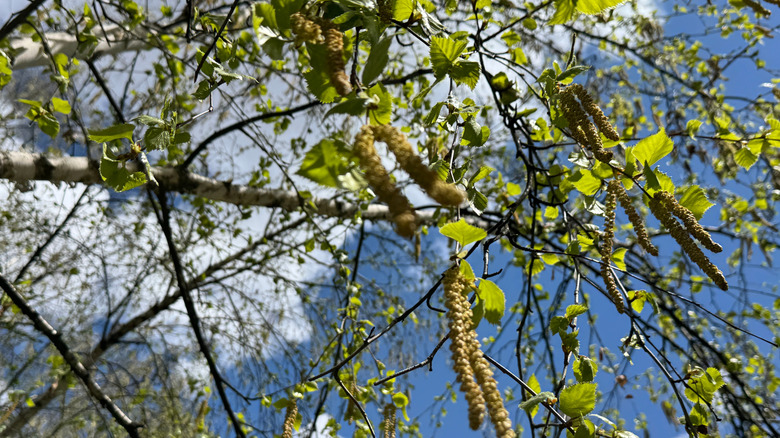Add Natural Shade To Your Backyard By Planting This Gorgeous Fast-Growing Tree
A tree-shaded lawn is an oasis in the summertime simply because it provides cover from the sun's rays, but the benefits of trees extend beyond shade. Trees reduce greenhouse gases, filter air pollution, and improve mental health. The shimmering leaves and exfoliating bark of river birch (Betula nigra) make the fast-growing, low-maintenance tree an outstanding addition to your landscape. Hardy in USDA zones 4 through 9, river birch grows 1 1/2 to 2 feet a year (more in warmer zones) until reaching a height of 30 to 60 feet tall and up to 50 feet wide, offering ample shade. Depending on the species of birch, the trees can take several years to reach maturity.
River birches are deciduous perennials that develop papery bark that peels away as the trees mature. Native Americans used sheets of birchbark in canoe building and smaller sections of bark for everyday objects like dishes and scrolls. The trees thrive in wet freshwater areas, hence the name river birch or water birch, and can survive periods of flooding. Betula nigra is the most heat-tolerant of the birches.
Three-inch-long, reddish-green catkins, the male flower of the tree, droop from the branches in early spring while the smaller female flowers are much less noticeable. When the serrated green leaves of the tree flutter in the wind, the silvery undersides are exposed, but the bark of river birch may be its most interesting feature. The bark is dark brown to almost black with peeling, papery patches that may be shades of gray, purple, and orange, and the leaves of the tree turn golden yellow in the fall.
Growing river birch for natural shade in your backyard
River birch tolerates full sun and partial shade, but the best fall color appears in trees grown in full sun. These native trees prefer moist soil with an acid or neutral pH. Alkaline soil may cause a condition called leaf chlorosis, a condition where the leaves turn yellow-green with dark veins. If the soil around your river birch isn't moist, mulch the tree and use soaker hoses to help the soil retain water. The normal lifespan of river birch is 50 to 75 years, but trees planted in consistently moist soil tend to live the longest. Established trees are adaptable to many conditions, wind tolerant, and rarely need pruning. If the tree does need pruning, do it in late summer or fall. When you're looking for the best place in your yard to grow birch trees, consider the size of the mature canopy and plant river birch an appropriate distance from buildings and other obstacles like overhead wires.
The 'Heritage' cultivar of Betula nigra is a landscape favorite because of its vigorous growth, notable bark exfoliation, and resistance to bronze birch borer, a pest you need to worry about when growing birch trees. Keep in mind, problems caused by common garden pests like leaf miners and aphids are possible in all cultivars, and the leaves may drop during times of drought. River birch can also be messy because it sheds twigs and catkins. However, it's still a great choice for natural shade.

